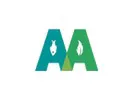The Aquaponics Association presents the 2019 Aquaponics Food Safety Statement, signed by over 130 organizations, including 98 from the U.S. This statement explains the food safety credentials of produce grown in aquaponic systems.
Established Science Confirms Aquaponic Fish and Produce are Food Safe
Aquaponics is a food production method integrating fish and plants in a closed, soil-less system. This symbiotic relationship mimics the biological cycles found in nature. Aquaponics has been used as a farming technique for thousands of years and is now seeing large-scale viability to feed a growing global population.
Benefits of aquaponics include dramatically less water use; no toxic chemical fertilizers or pesticides; no agriculture discharge to air, water or soil; and less food miles when systems are located near consumers where there is no arable soil.
Aquaponics has consistently proven to be a safe method to grow fresh, healthy fish, fruits, and vegetables in any environment. Governments and food safety certifiers must utilize the most current, accurate information to make food safety decisions about aquaponics at this time when our food systems adapt to a growing population and environmental concerns.
Food Safety Certification for Aquaponics
For years, commercial aquaponic farms have obtained food safety certification from certifying bodies such as Global GAP, USDA Harmonized GAP, Primus GFS, and the SQF Food Safety Program. Many aquaponic farms are also certified USDA Organic. These certifying bodies have found aquaponics to be a food safe method for fish, fruits, and vegetables. As far back as 2003, researchers found aquaponic fish and produce to be consistently food safe (Rakocy, 2003; Chalmers, 2004). Aquaponic fish and produce continue to be sold commercially across North America following all appropriate food safety guidelines.
Recent Certification Changes Based on Unfounded Concerns
Recently, Canada GAP, a food safety certifier, announced that it will phase out certification of aquaponic operations in 2020, citing concerns about the potential for leafy greens to uptake contaminants found in aquaponic water.
Correspondence with Canada GAP leadership revealed that the decision to revoke aquaponics certification eligibility was based on research and literature surveys related to the uptake of pharmaceutical and pathogenic contaminants in hydroponic systems. However, these concerns are unfounded based on the established evidence.
First, the Canada GAP decision assumes that aquaponic growers use pharmaceuticals to treat fish, and that these pharmaceuticals would be taken up by plants causing a food safety risk.
In fact, pharmaceuticals are not compatible with aquaponics. Aquaponics represents an ecosystem heavily dependent on a healthy microorganism community (Rinehart, 2019; Aquaponics Association, 2018). The pharmaceuticals and antibiotics referenced by Canada GAP would damage the beneficial microorganisms required for aquaponics to function properly.
Second, the CanadaGAP decision misrepresents the risk of pathogenic contamination. Aquaponic produce – like all produce – is not immune to pathogenic contamination. However, aquaponics is in fact one of the safest agriculture methods against pathogenic risk. Most pathogenic contamination in our modern agriculture system stems from bird droppings, animal infestation, and agriculture ditch or contaminated water sources. In contrast, commercial aquaponic systems are “closed-loop” and usually operated in controlled environments like greenhouses. Almost all operations use filtered municipal or well water and monitor everything that enters and leaves the system.
Aquaponics and Food Safety
If practiced appropriately, aquaponics can be one of the safest methods of food production. The healthy microbes required for aquaponics serve as biological control agents against pathogenic bacteria. (Fox, 2012) The healthy biological activity of an aquaponic system competitively inhibits human pathogens, making their chances for survival minimal. This is, in effect, nature’s immune system working to keep our food safe, rather than synthetic chemicals.
The Government of Alberta, Canada ran extensive food safety tests in aquaponics from 2002 to 2010 at the Crop Diversification Centre South (CDC South) and observed no human pathogenic contamination during this entire eight-year period (Savidov, 2019, Results available upon request). As a result of this study, the pilot-scale aquaponic operation at CDC South was certified as a food safe operation in compliance with Canada GAP standards in May 2011 (GFTC OFFS Certification, May 26, 2011). Similar studies conducted by University of Hawaii in 2012 in a commercial aquaponic farm revealed the same results. (Tamaru, 2012)
Current aquaponic farms must be able to continuously prove their food safety. The U.S. Food Safety Modernization Act requires farms to be able to demonstrate appropriate mitigation of potential sources of pathogenic contamination as well as water testing that validates waters shared with plants are free from contamination by zoonotic organisms. So, if there is a food safety concern in aquaponics, food safety certifiers will find and document it.
Conclusion
The recent certification decision from Canada GAP has already set back commercial aquaponic operations in Canada and has the potential to influence other food safety certifiers or create unfounded consumer concerns. At a time when we need more sustainable methods to grow our food, it is essential to work on greater commercial-government collaboration and scientific validation to ensure fact-based food safety standards.
In order to expand the benefits of aquaponics, we need a vibrant commercial sector. And for commercial aquaponics to succeed, we need reliable food safety certification standards based on established science.
Consumers can feel secure knowing that when they purchase aquaponic fish and produce, they are getting fresh food grown in one of the safest, most sustainable methods possible.
Sincerely,
The Aquaponics Association, along with the undersigned entities
For more information: Aquaponics Association
Aquaponics Association
4531 Airlie Way, Annandale VA 22003
[email protected]
aquaponicsassociation.org
